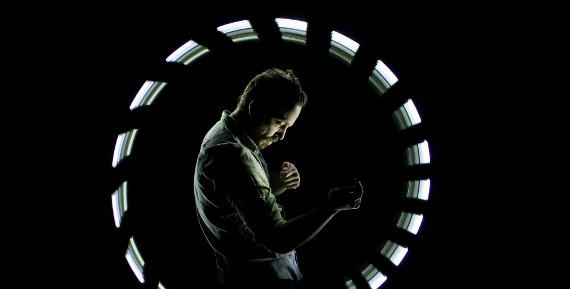Looking for something fresh and new in photography? Well look no further than Eric Paré’s latest art photography experiment, LightSpin. This project combines the bullet time photography technique with light painting and contemporary dance. The project was launched in honor of International Dance Day and is getting a large amount of views for the unique concept and the question that it forms in everyone’s mind, “How did they do that?”
Timecode Lab has produced a number of experimental projects that has sparked conversation over innovation, technology, and creativity. LightSpin is no different, leaving viewers in awe, yet puzzled at the same time. The big question that’s on everyone’s minds is how they managed to create the LightSpin video. Timecode Lab has admitted that they used a bullet time camera setup, like that used in the Matrix, to achieve the stop-motion and freeze-motion perspectives. But they haven’t yet revealed how they managed to create the unique light ring over each subject.

How was this image captured? That’s Timecode Lab’s secret.
Timecode Lab says that they will be releasing a behind-the-scenes video on May 29th. Until then, their technique is left up to speculation. The first question is whether the images are a single exposure or double exposures. And with the mix of blur in the light source and the crisp frozen movements of the dancers, one would think this was the case (Via SLR Lounge). However, my own theory is that each image is a single exposure as the light ring appears to be the the light source responsible for lighting each subject. Just as the light ring changes slightly in shape and pattern, so does the spread of the light on the subject.
The real question is how the light source, which, due to the spaces in the light ring, I presume is blinking, is blurred while the subject isn’t. It looks as though there may be a second person moving a light in an arc shape around the subject as he/she dances. But there is no way that a person could move a light that fast. A mechanical device of some sort perhaps? Who knows. The answers will be revealed May 29th. Until then, it’s a mystery.
Update: here is a behind the scenes video:
Like This Article?
Don't Miss The Next One!
Join over 100,000 photographers of all experience levels who receive our free photography tips and articles to stay current:






I think this is done with a sort of stop motion technique. They take seperate photographs and use light painting for the effect, have the dancers turn around a bit and do the same.
Lee, you are right. I released the making-of last week, and this is clearly shown in the video :)
http://lightspin.ericpare.com/documentary